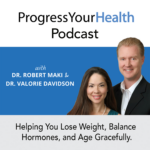
Over the last few years, there has been an increased awareness of thyroid conditions, specifically hypothyroidism. The proper thyroid evaluation has become somewhat controversial as well. For decades, a simple TSH (Thyroid Stimulating Hormone) test has been the conventional test of choice in screening most thyroid related issues.
However, an ideal thyroid evaluation is so much more than just the typical TSH blood test. The TSH reference range is 0.45 – 4.5 uIU/mL depending on the lab. This range is quite large and many people can exhibit hypothyroid related symptoms, but their TSH is within normal range.
Common Hypothyroid Symptoms:
Other tests for thyroid function include both Free T4 and Free T3. The hormone Thyroxine (T4), which is released by the thyroid gland is an inactive hormone. The body will convert T4 into T3, which mainly occurs in the liver. The free T3 is the active form of thyroid so it is very important to include this blood test for proper evaluation.
It is important to point out, that approximately 70% of all hypothyroid cases are of the Hashimoto’s Thyroiditis type, which is an autoimmune condition where the immune system is attacking the thyroid. With Hashimoto’s you want to work on the autoimmune component, which means beyond just medication.
The antibodies involved in Hashimoto’s hypothyroid are the Thyroid Peroxidase Antibody (TPO) and and the Thyroglobulin Antibody (TGab). It is important to test these antibodies in any thyroid patient to differentiate if they have Hashimoto’s or generalized hypothyroid. Often some patients have elevated antibodies but have normal values of TSH, Free T3, Free T4.
Thyroid Testing:
There are many different types of medications for hypothyroidism. Conventionally, the typical medications prescribed are Synthroid, Levothyroxine or Levoxyl. It is very common for many patients on Synthroid, Levothyroxine or Levoxyl to have a reduced TSH but also still experience hypothyroid related symptoms.
In most cases, we like to use medications with a combination of both T4 and T3. Conventionally, Cytomel is a T3 drug that is often prescribed, but it is an instant release and many patients do not tolerate this medication. A better option is Compounded Thyroid, which is usually a Sustained Release (SR) combination of T4 and T3. In addition, there is Armour and Nature-Throid, which are both porcine based medications that also included T4 and T3. There is no one-size-fits-all in hypothyroid treatment.
The thyroid and adrenal glands are connected and when one is low the other is compromised. Patients with adrenal fatigue sometimes cannot tolerate thyroid medication until you treat the adrenal dysfunction, making it important to work on the adrenals when you are being treated for hypothyroid.
Hypothyroidism also includes patients that have had their thyroid removed due to thyroid cancer. These patients do very well on compounded T3/T4 thyroid therapy.
Many doctors that practice “functional medicine” will be able to treat your thyroid condition more individually, looking more into functional blood testing for Free T3 and Free T4 as well as treating other systems of the endocrine system.
If you have questions, please feel free to leave a comment below, you can contact us directly.
The post Functional Approach to Hypothyroid Issues | PYHP 002 appeared first on .
Discover the common and unfamiliar symptoms that you might be experiencing. Get access to cases of real women with hormonal conditions.

In this episode, we talk about hormone treatments for perimenopause and menopause. There is a vast distinction between perimenopause and menopause when it comes to treatment options. We often see women who are being treated for menopause when they are genuinely not in menopause. Meet Linda: Linda is a listener who sent us a question […]
Recently, Catherine posted a question on our website about Biest cream, and we knew this could interest our listeners. Biest is a combination of estriol and estradiol, one of the most common forms of estrogen therapy used in bio-identical hormone replacement. There are many doses, ratios, options, and methods of using Biest, so we thought […]
Welcome to the Progress Your Health Podcast! This is a podcast that helps you learn about balancing hormones, especially during perimenopause and menopause. We love hearing from our listeners. If you have a question, please visit our website and click Ask the Doctor a question. Let’s read Brigitte’s question! I have been listening and learning […]
In this episode, we talk about the difference between perimenopause and menopause. Both Dr. Maki and I (Dr. Davidson) have worked with women in perimenopause and menopause since 2004 and sometimes get a bit myopic and technical when it comes to explaining the differences. The other day, a patient of Dr Maki’s asked the question, […]
We recently got a great question from a listener and want to share it with you. This question is about a perimenopausal 51-year-old female. She is still menstruating and having confusion about her hormone testing and the hormone therapy that she is currently taking. She is experiencing some breast tenderness and irritability related to her […]
in this episode, we answered a listener’s question. We love questions from listeners. If you have a question, please visit our website and click Ask the Doctor a question. Here is the listener’s question: I have been perimenopause for at least 4 years now I am 47 and after completing a Dutch test with a […]